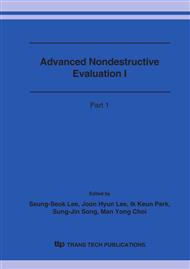p.294
p.298
p.302
p.306
p.310
p.314
p.318
p.322
p.328
A Study on the Elastic Wave Propagation in the Telecommunication Pole Having Different Subsurface End Condition
Abstract:
Alternative construction methods and a simple method for identifying pole’s subsurface end condition using elastic wave propagation test were proposed. After twelve prototypes of poles having different subsurface end conditions were constructed, horizontal loading tests and elastic wave propagation tests were performed. It was found that there was a close correlation between the 1st resonant frequency and maximum pulling force. The results of this study will provide a key to identify the telecommunication pole’s foundation.
Info:
Periodical:
Pages:
310-313
Citation:
Online since:
October 2006
Authors:
Price:
Сopyright:
© 2006 Trans Tech Publications Ltd. All Rights Reserved
Share:
Citation:


